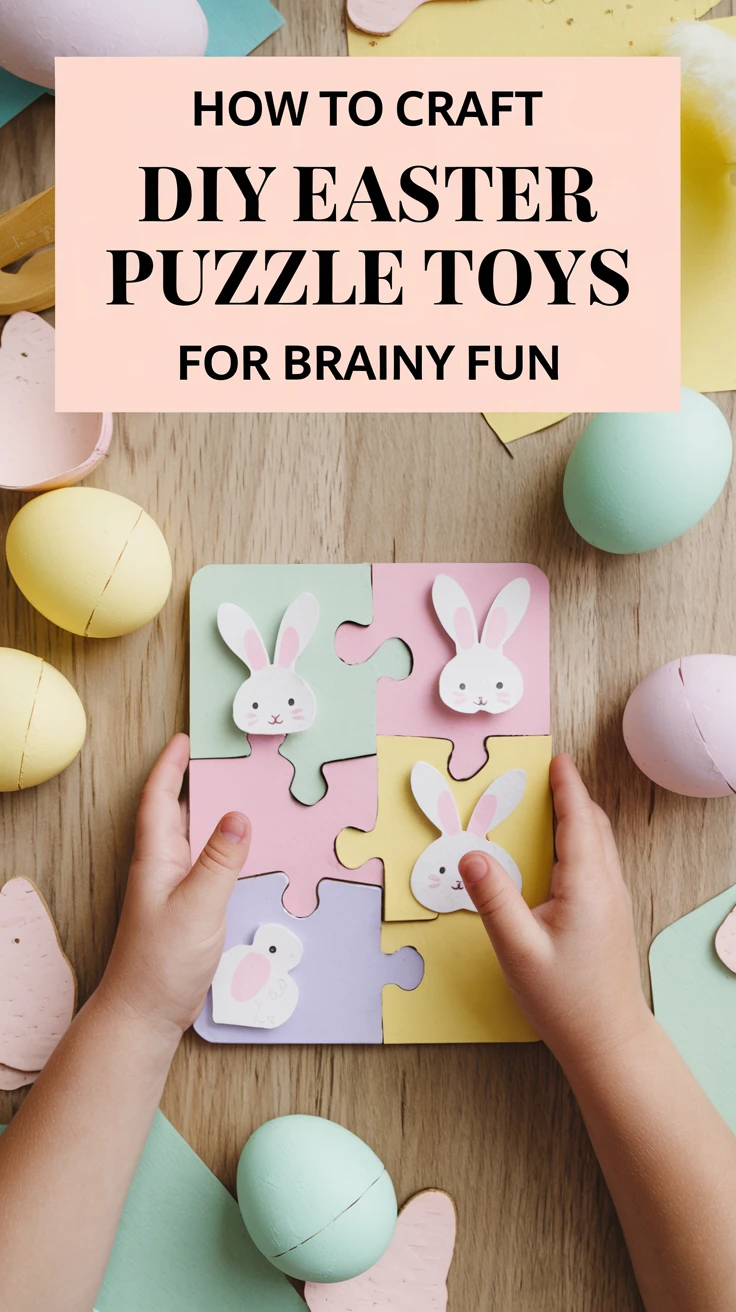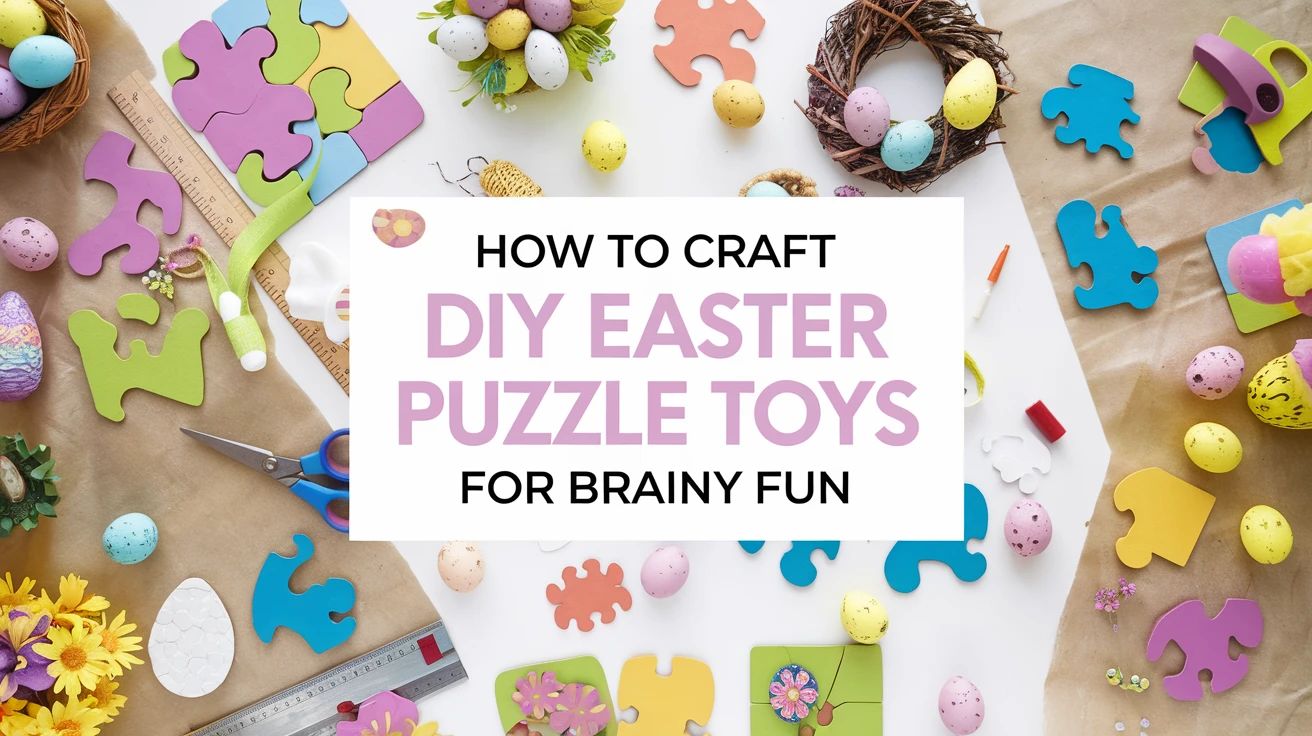
Introduction
Easter is the perfect time to engage little minds with something more stimulating than just sugar! DIY Easter puzzle toys combine the joy of the holiday with brain-boosting fun that’ll keep kids engaged long after the chocolate eggs have disappeared. I’ve been creating these puzzles with my own kids for years, and let me tell you—there’s nothing quite like watching their faces light up when they solve a challenge they initially thought impossible. Isn’t it wonderful when play and learning come together so seamlessly?
Whether you’re looking to reduce the candy overload this Easter or simply want to add some educational elements to your celebrations, these homemade puzzle toys will be a hit. The best part? You’ll likely have most of the materials already lying around your home. Ready to hop into some brainy Easter fun? Let’s get crafting!
1. Egg Hunt Puzzle Pieces

Transform your traditional egg hunt into a brain-teasing adventure by creating puzzles that kids must assemble after finding all the eggs. This adds an extra layer of excitement and accomplishment to the classic Easter activity.
What You’ll Need:
- Plastic Easter eggs (larger sizes work best)
- Printed images or photos (family photos, Easter scenes, or characters)
- Scissors
- Laminating paper or clear contact paper (optional but recommended)
- Small bags or containers for keeping sets together
How to Make It:
Choose an image and cut it into puzzle pieces that will fit inside your plastic eggs. For younger children, create 4-6 large pieces; for older kids, increase the challenge with 10-12 smaller pieces. If you’re feeling ambitious, create a multi-egg puzzle where each egg contains pieces that contribute to a larger image.

View on AmazonAs an Amazon Associate, I earn from qualifying purchases.

View on AmazonAs an Amazon Associate, I earn from qualifying purchases.
Pro Tip: Laminate your images before cutting them into puzzle pieces to make them more durable and reusable for future Easter celebrations. I learned this the hard way after a light drizzle turned last year’s paper puzzles into soggy messes!
2. Easter Bunny Jigsaw Puzzles
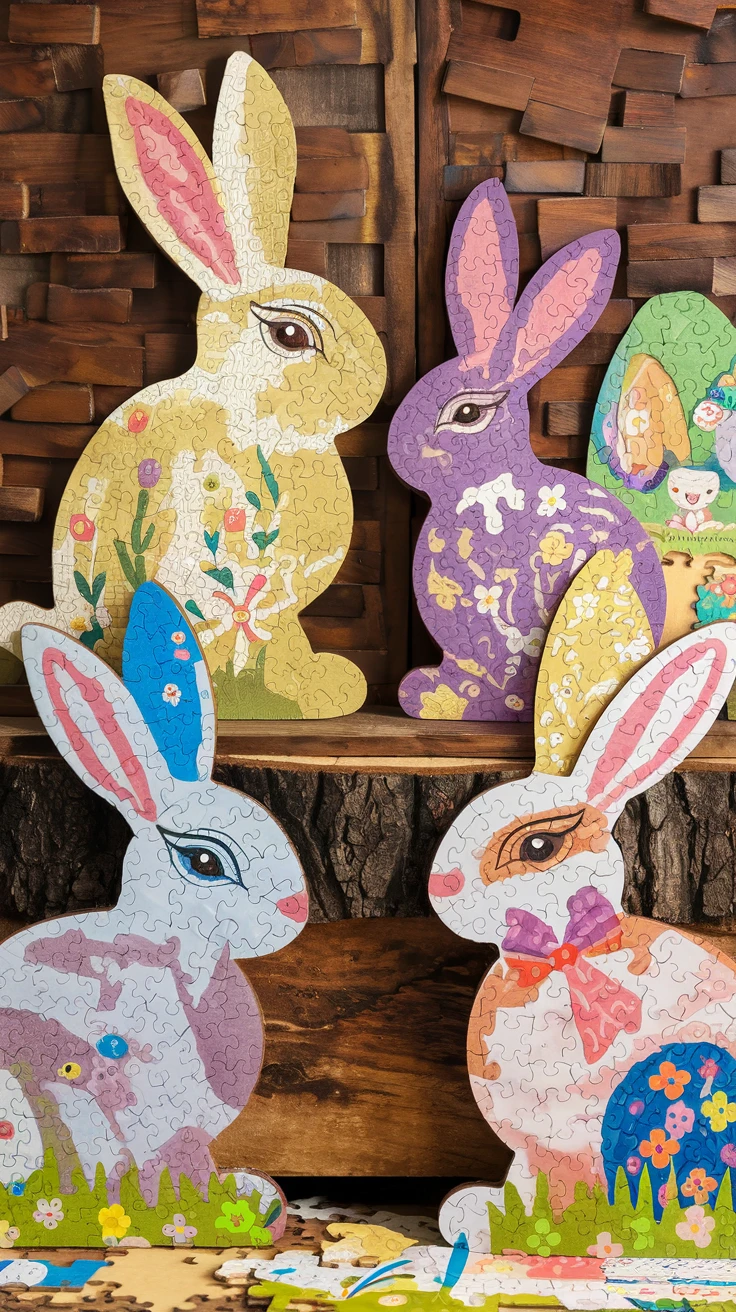
Handmade jigsaws with Easter themes make wonderful keepsakes and can be customized to any skill level. These DIY Easter puzzle toys can be as simple or complex as you want.
What You’ll Need:
- Thin plywood, heavy cardboard, or foam board
- Easter-themed images (either drawn by you or printed)
- Craft knife or jigsaw (adult supervision required)
- Acrylic paints or markers
- Mod Podge or clear sealer
- Sandpaper (if using wood)
How to Make It:
Start by attaching your image to your board material using glue or Mod Podge. Once dry, draw puzzle piece shapes on the back and carefully cut them out. For wooden puzzles, sand the edges to prevent splinters. Finally, seal the puzzle pieces with another layer of Mod Podge to protect your creation.
My daughter still treasures the bunny jigsaw I made when she was four—it featured our pet rabbit dressed in an Easter bonnet (don’t worry, he tolerated the photo session quite well in exchange for extra treats).
3. Memory Match Easter Edition
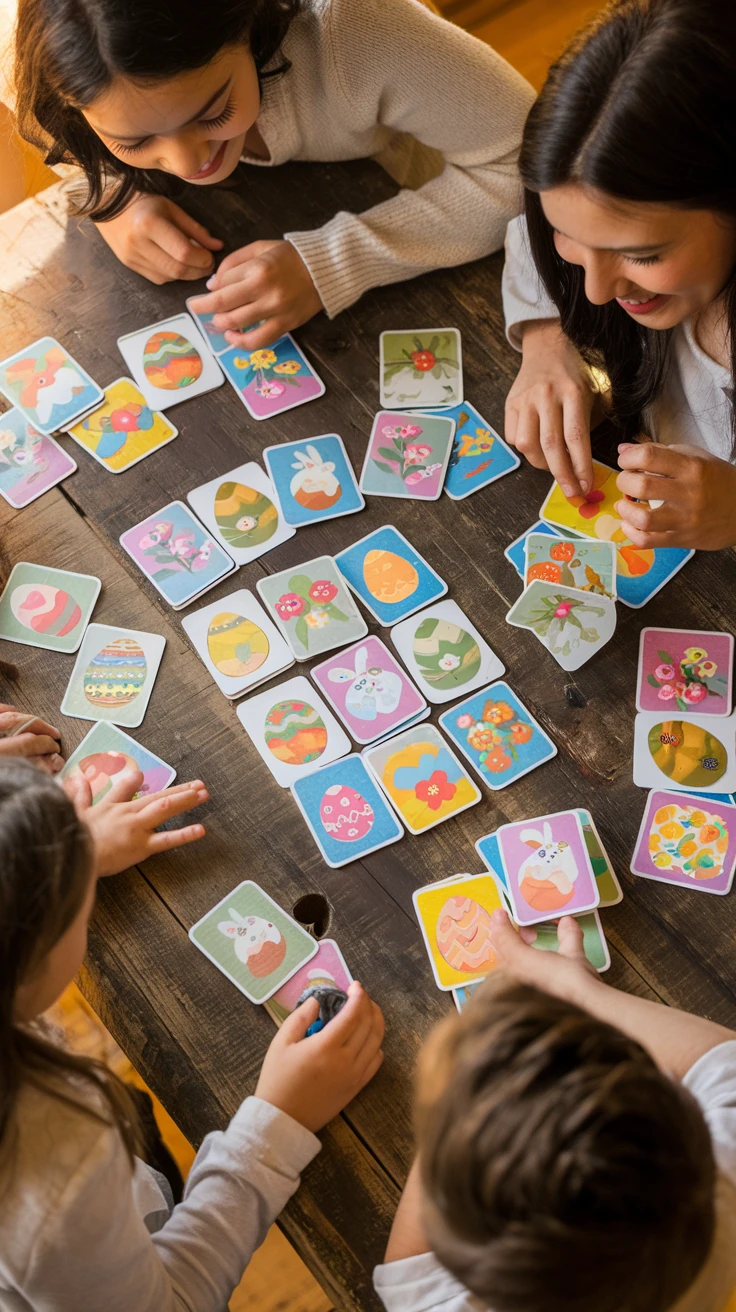
Create a festive version of the classic memory matching game that improves concentration and visual memory. This DIY Easter puzzle toy is particularly good for mixed-age groups as it’s enjoyable for almost everyone.
What You’ll Need:
- Cardstock or heavy paper
- Easter stickers or images
- Scissors
- Ruler
- Markers or colored pencils
- Laminating paper (optional)
How to Make It:
Cut your cardstock into equal-sized squares (about 3″x3″ works well). Create pairs of matching Easter images—you can use stickers, draw your own, or print and glue pictures. For younger players, start with just 6-8 pairs; for older children, 12-15 pairs provides a good challenge.

View on AmazonAs an Amazon Associate, I earn from qualifying purchases.

View on AmazonAs an Amazon Associate, I earn from qualifying purchases.
Pro Tip: For an educational twist, create matching pairs that connect Easter vocabulary words with images, or math problems with their answers. My son’s kindergarten teacher used this approach last year, and the kids were solving addition problems without even realizing they were doing math!
4. Easter-themed Tangrams
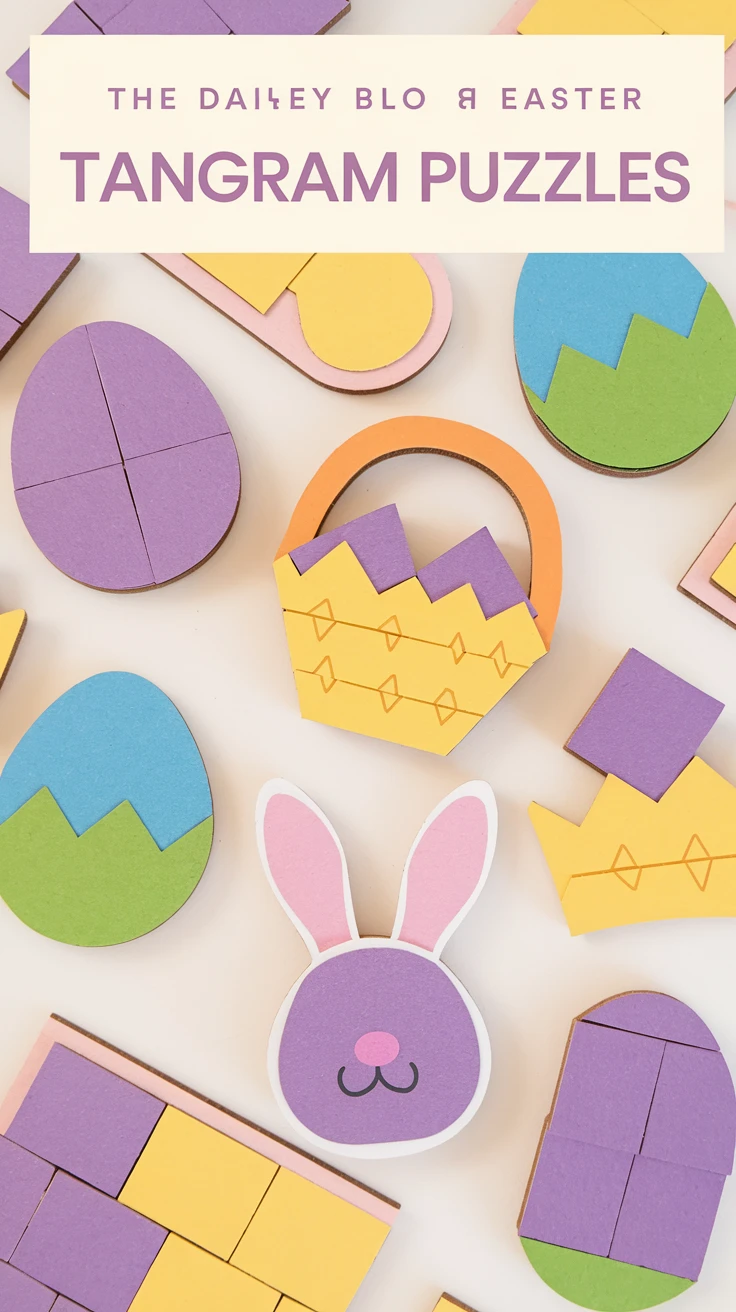
Tangrams are ancient Chinese puzzles that develop spatial reasoning and geometric thinking. Creating Easter-shaped tangram challenges adds a seasonal twist to this classic brain teaser.
What You’ll Need:
- Colored cardstock or thin craft foam
- Scissors
- Template for tangram pieces (one square divided into 7 specific pieces)
- Easter shape outlines (bunny, egg, chick, etc.)
- Small bags for storage
How to Make It:
Cut out the seven standard tangram pieces from your material of choice. Then, create challenge cards by drawing the outlines of Easter shapes that can be formed using all seven pieces. Don’t show where the individual pieces go—that’s the puzzle! Include a difficulty rating on each challenge card.
I’ve found that pastel-colored foam sheets make the most durable tangram pieces, and they’re gentle enough for little fingers. My nephew spent almost two hours working through all the Easter tangram challenges last year—much longer than his usual attention span!
5. Bunny Maze Challenges
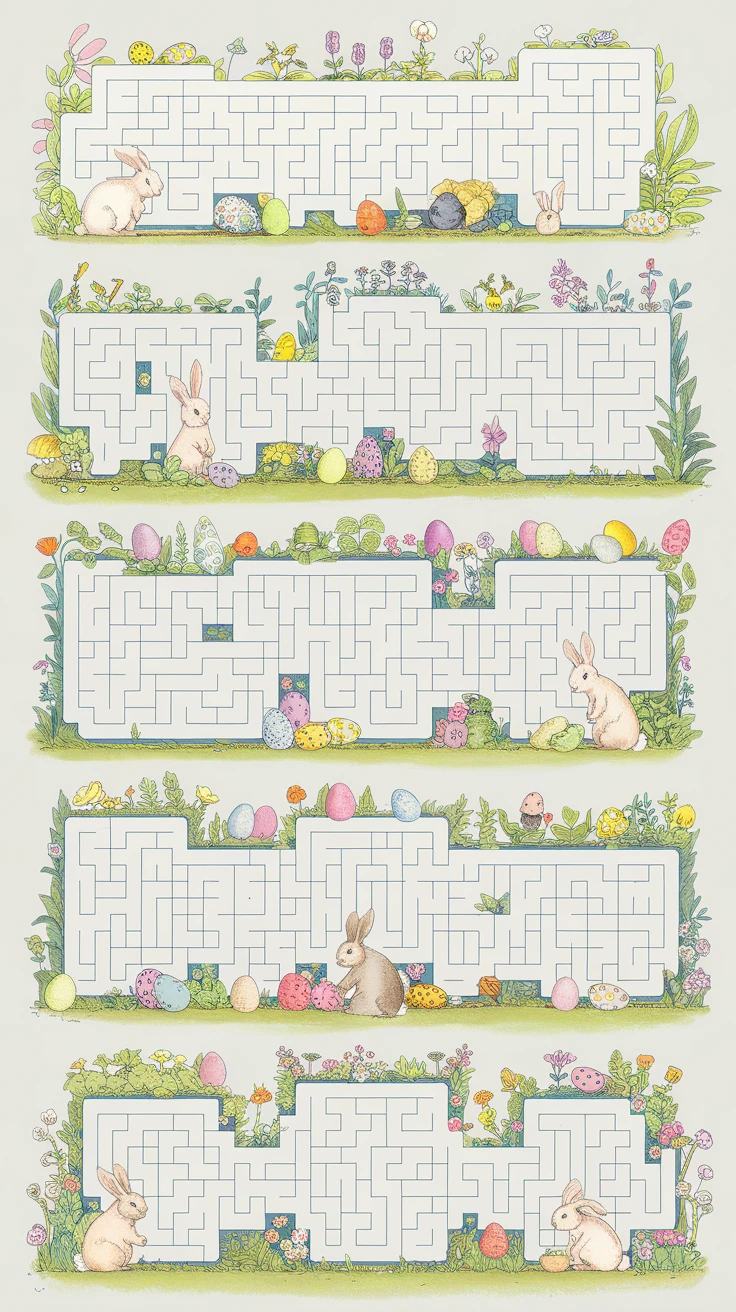
Help the Easter Bunny find his way through increasingly difficult mazes to deliver eggs. These DIY Easter puzzle toys develop problem-solving skills and persistence.
What You’ll Need:
- Paper or cardboard
- Markers or colored pencils
- Small marbles or beads
- Clear plastic lid or sheet (optional, for 3D mazes)
- Hot glue gun (for 3D mazes)
How to Make It:
For simple paper mazes, draw pathways with Easter-themed obstacles and characters. For a more elaborate 3D maze, use a shallow box lid and create walls with hot glue. Add a small marble “bunny” that needs to navigate through the maze to reach the “basket” at the end.

View on AmazonAs an Amazon Associate, I earn from qualifying purchases.

View on AmazonAs an Amazon Associate, I earn from qualifying purchases.
Pro Tip: Create a series of mazes with increasing difficulty, and offer small prizes for completing each level. This keeps kids motivated and provides a natural progression of challenge.
6. Easter Riddle Eggs

Combine the fun of puzzles with the joy of riddles in these clever DIY Easter puzzle toys that exercise both logical and verbal reasoning.
What You’ll Need:
- Plastic Easter eggs
- Small strips of paper
- Pens or markers
- Small prizes or treats
How to Make It:
Write age-appropriate riddles on strips of paper, with each riddle leading to the location of the next egg. Place the riddles inside eggs, along with small prizes if desired. The final egg should contain a special reward or congratulatory message.
Last Easter, I created a riddle egg hunt that led my kids all around the house and yard. Their favorite riddle was “I’m round and smooth, and full of bubbles, find me where Mom soaks away her troubles” (the bathtub, of course!). The giggles were worth every minute of planning.
7. Easter Puzzle Boxes

Create intriguing boxes with hidden compartments that can only be opened by solving a puzzle. These DIY Easter puzzle toys teach logical thinking and fine motor skills.
What You’ll Need:
- Small wooden or cardboard boxes
- Additional cardboard, craft sticks, or wood pieces
- Glue
- Paint or decorative paper
- Small hinges, sliders, or other hardware (optional)
- Easter treats or small toys to hide inside
How to Make It:
Start with a basic box and add elements that must be manipulated in a specific sequence to open it. This might include sliding panels, turning discs, or pressing hidden buttons. Decorate with Easter motifs and fill with special treats once completed.

View on AmazonAs an Amazon Associate, I earn from qualifying purchases.

View on AmazonAs an Amazon Associate, I earn from qualifying purchases.
Pro Tip: For younger children, create simpler mechanisms like a sliding panel with a bunny handle. For older kids, incorporate multiple steps that must be performed in the correct order. My 10-year-old still talks about the puzzle box that required aligning painted eggs in the correct pattern to unlock the compartment containing his Easter gift card.
8. Easter Code-Cracker Games
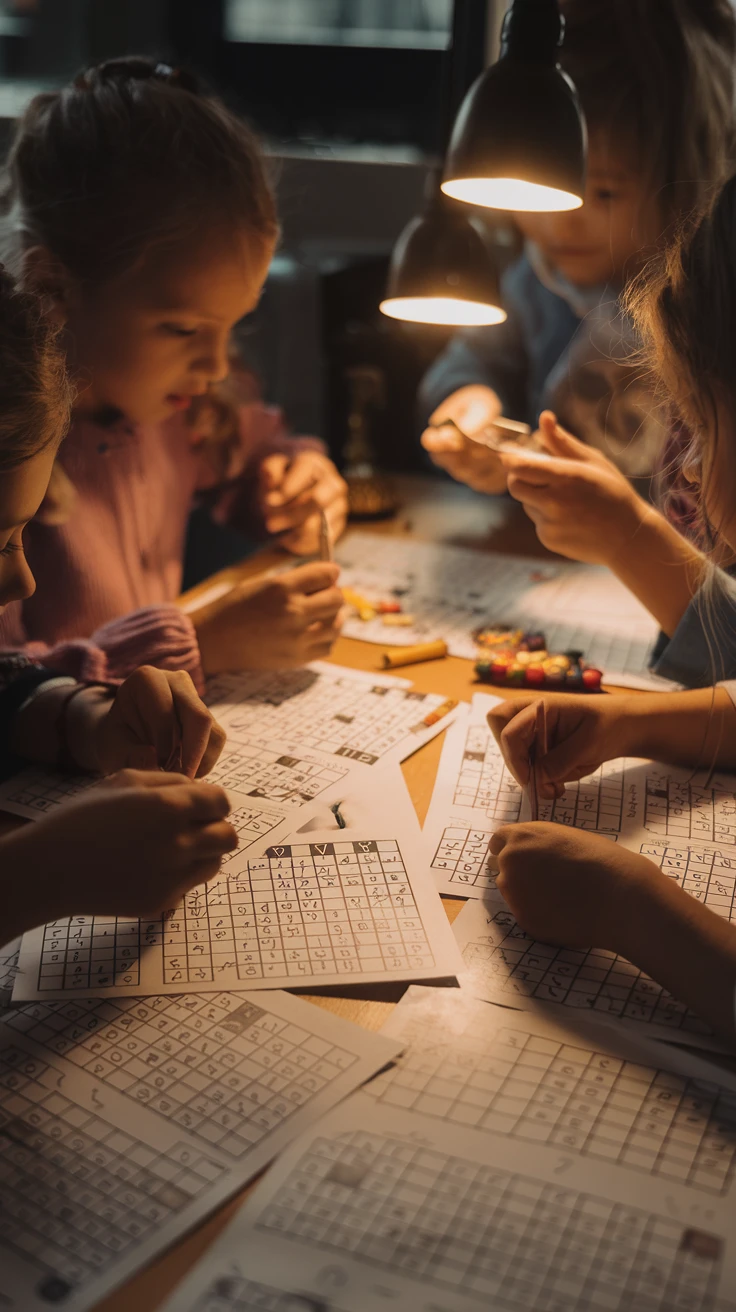
Develop literacy and critical thinking with secret codes and word puzzles that reveal Easter messages or clues.
What You’ll Need:
- Paper and pencils
- Colored markers
- Cipher key templates (substitution codes, morse code, etc.)
- Easter-themed word lists
How to Make It:
Create coded messages using simple substitution ciphers (where each letter is replaced by another letter or symbol). For younger children, use pictures instead of letters. For a progressive challenge, create a series of coded clues, with each solved message leading to the next clue.
One of our family favorites is the “Easter Word Scramble” where I hide plastic eggs containing scrambled Easter words. Once all eggs are found, the words must be unscrambled, and then arranged to form a secret message that reveals where a special prize is hidden.
9. DIY Easter Puzzle Toys for Different Age Groups
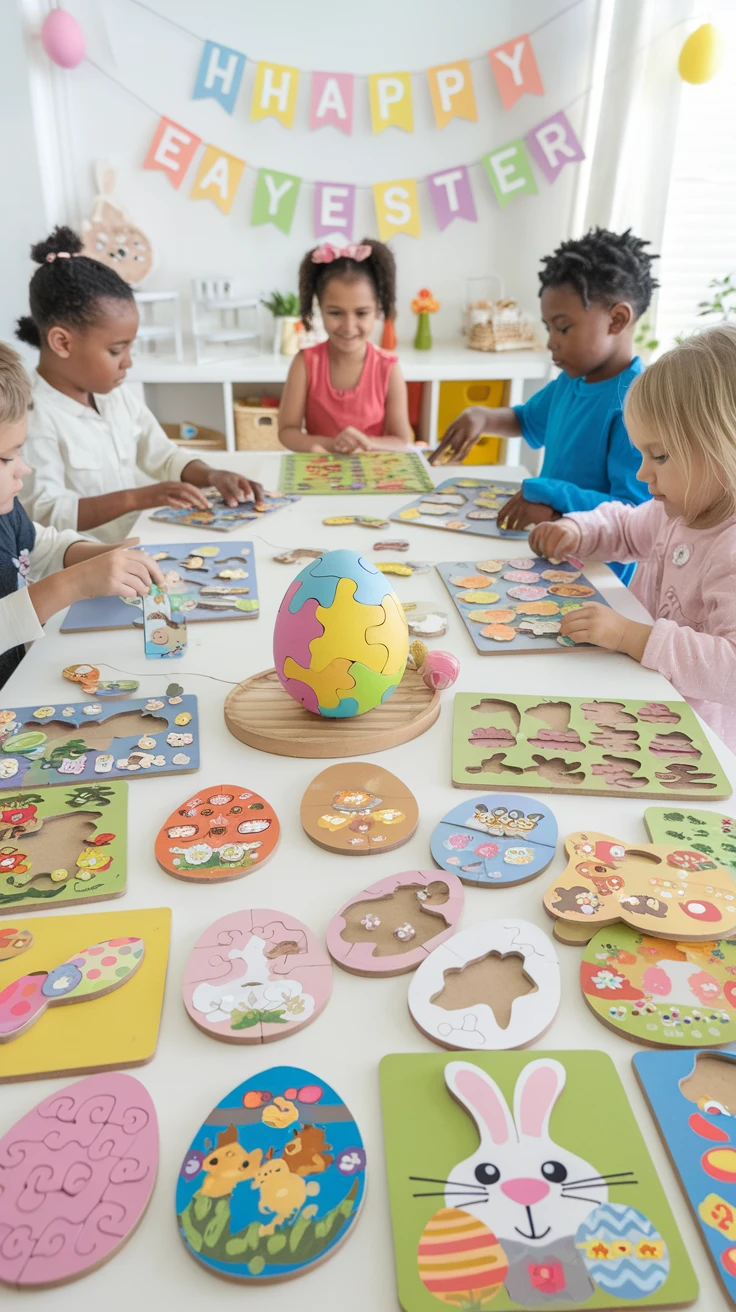
Tailoring your puzzle toys to different developmental stages ensures everyone can participate in the brainy Easter fun!
For Toddlers (Ages 1-3):
- Simple 2-3 piece egg-shaped puzzles with large, easy-to-grasp pieces
- Shape sorters with Easter-themed shapes
- Sensory eggs with different textures and sounds
For Preschoolers (Ages 3-5):
- 4-6 piece puzzles with Easter characters
- Simple matching games with Easter pairs
- Pattern completion activities with Easter stickers
For Elementary Ages (Ages 6-10):
- 12-24 piece jigsaws with more complex Easter scenes
- Word searches and crosswords with Easter vocabulary
- Secret code messages and scavenger hunt clues
For Tweens and Teens (Ages 11+):
- Multi-step puzzle boxes with hidden compartments
- Easter-themed escape room style challenges
- Cryptic codes requiring multiple stages to solve

View on AmazonAs an Amazon Associate, I earn from qualifying purchases.

View on AmazonAs an Amazon Associate, I earn from qualifying purchases.
Remember, these are just guidelines—you know your child best! My 4-year-old nephew can handle puzzles meant for elementary kids, while some older children might prefer less challenging options. The goal is enjoyment and a sense of accomplishment, not frustration.
10. Educational Benefits of DIY Easter Puzzle Toys
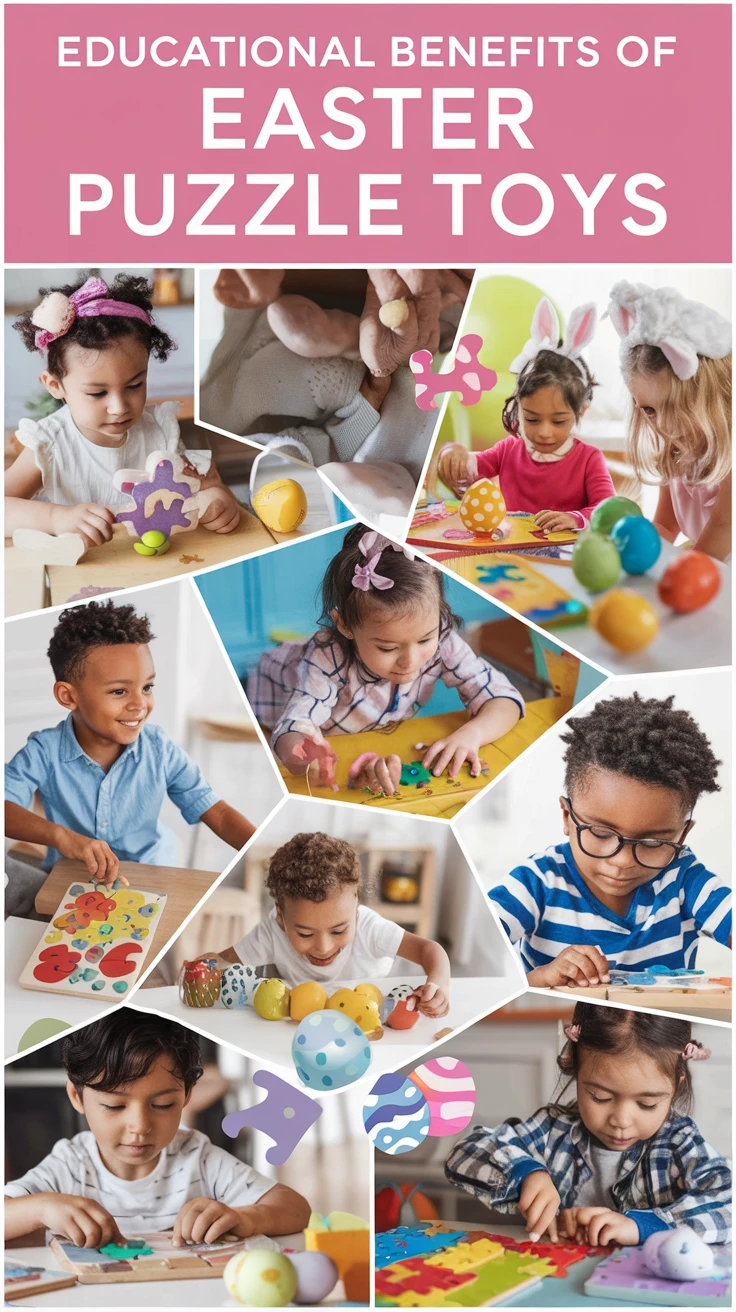
These DIY Easter puzzle toys do more than just entertain—they’re secretly building crucial skills while children play!
- Cognitive Development: Puzzles enhance problem-solving abilities, critical thinking, and memory skills.
- Fine Motor Skills: Manipulating small pieces helps develop hand-eye coordination and dexterity.
- Patience and Persistence: Working through challenges teaches children to persevere.
- Spatial Awareness: Jigsaw puzzles and tangrams develop an understanding of how objects relate to each other in space.
- Literacy Skills: Word puzzles and riddles build vocabulary and reading comprehension.
- Math Concepts: Many puzzles incorporate counting, patterns, and logical sequences.
- Social Skills: When played together, puzzle toys encourage cooperation and communication.

View on AmazonAs an Amazon Associate, I earn from qualifying purchases.

View on AmazonAs an Amazon Associate, I earn from qualifying purchases.
I’ve noticed that my children remember concepts much better when they’re embedded in play. The Easter-themed tangrams we made last year introduced geometric terms that my daughter later recognized in her math class—”Look, Mom, that’s a parallelogram like our Easter bunny tangram!”
Key Takeaways
- DIY Easter puzzle toys combine holiday fun with brain-boosting benefits
- Most puzzle toys can be made with simple materials you already have at home
- Tailor the difficulty level to match your child’s age and abilities
- Incorporate educational elements like math concepts or vocabulary
- Consider laminating or sealing paper elements for durability and reuse in future years
Conclusion
Creating DIY Easter puzzle toys offers so much more than just an alternative to candy-filled celebrations. These handcrafted brain teasers provide meaningful engagement, develop crucial skills, and create lasting memories. I still cherish the look of accomplishment on my son’s face when he finally solved the Easter puzzle box after multiple attempts—that kind of perseverance is a life skill worth far more than any store-bought toy.
Whether you’re crafting simple egg-shaped puzzles for toddlers or elaborate code-cracking challenges for older children, you’re giving a gift that continues to engage long after Easter Sunday. So gather your supplies, unleash your creativity, and get ready to watch young minds bloom alongside the spring flowers. These DIY Easter puzzle toys might just become your family’s new favorite tradition!
Frequently Asked Questions
-
What materials are safe for Easter puzzles for toddlers?
For toddlers, opt for large, durable materials without small parts that could pose choking hazards. Thick cardboard, craft foam, and wooden pieces (well-sanded) are good choices. Avoid using small beads, buttons, or anything that could detach easily. Always supervise young children during play with homemade toys.
-
How can I make Easter puzzles more challenging for older kids?
For older children, increase difficulty by adding more pieces to jigsaws, creating multi-step puzzle boxes, or developing coded clues that require multiple stages to solve. Consider time challenges, puzzles that use both sides of pieces, or incorporating math problems that must be solved to progress. Themed escape room-style challenges with multiple puzzles working together can be particularly engaging for tweens and teens.
-
Can I use recycled materials for DIY Easter puzzle toys?
Absolutely! Recycled materials are perfect for DIY Easter puzzle toys. Cereal boxes make excellent jigsaw puzzles, empty tissue boxes can become puzzle sorting stations, and plastic containers can be transformed into puzzle boxes. Egg cartons are naturally Easter-appropriate and work well for memory games or sorting activities. Using recycled materials not only saves money but also teaches children about sustainability.
-
How do I preserve handmade puzzles for future Easters?
To make your DIY Easter puzzle toys last, laminate paper components or seal them with Mod Podge. Store pieces in labeled plastic bags or containers after use. For wooden puzzles, apply a clear sealant to protect from moisture. Take photographs of completed puzzles to help with reassembly next year. Store everything in a cool, dry place away from direct sunlight to prevent fading or warping.
-
What are some non-candy rewards to pair with Easter puzzles?
Great alternatives to candy include stickers, temporary tattoos, small art supplies, seed packets for spring planting, mini bubble wands, coins for their piggy bank, small books, hair accessories, toy cars, or character figurines. Experience-based rewards like tickets to a movie or special one-on-one time can also be meaningful. Consider creating a coupon book with privileges like “Stay up 30 minutes past bedtime” or “Choose dinner for a night” as prizes for completing challenging puzzles.
